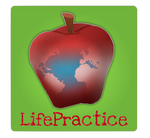cross posted from www.GingerLewman.org
You've done your planning.
You've been very purposeful in creating perfect environment. The teachers are trained. The materials and resources are available. The parents are informed. The administrators are in support. The curriculum is strong and rigorous. The expectations are clear and have been shared with and built upon by the students. The groups are lined out and they have their contracts signed and are ready to go.
It's time! The work begins!
But wait. The sharp-witted educator is still cautious and keenly self-aware of her own actions and reactions with students.
This is precisely the danger-time when even the best teachers have a natural tendency to fall into one of the three nasty traps that will quickly and mercilessly kill the learning, the excitement, engagement and true learning that Project Based Learning offers.
Trap #1 Becoming “Hannah Helper”
Some educators tend to over-help the kids by directly teaching information, improving student ideas with their own, and have their own hands on the work instead of the kids' hands working. These teachers are excited about the project and the possibilities of the learning that can happen. They see students floundering at times and with one eye on the deadline clock, they decide to help out or demonstrate how something can be done, but often end up doing the majority of the work themselves. These teachers also are worried that not all students are getting the deep content and detailed facts that they'd get if the teacher was handing out worksheets and assigning reading homework.
In short, they're great teachers who care about the students' quality of learning, but they have trouble allowing students to make mistakes and grow on their own merits. At the root, they don't trust that students are ever able to learn without their direct interference.
Students need to learn how to find, support, and create their own learning with nurturing guidance that allows for mistakes and ”messy learning” to happen. It’s ok. It’s part of the learning process. “Hannah Helper” can help by asking questions that cause students to rethink or think deeper. She doesn’t have to always be the source of information for learning and growth.
Trap #2 Becoming “Larry Lazy”
Some educators embrace the concept of student-directed learning a little too literally, comfortably siting back and watching the kids work or struggle. They tell themselves that students are learning how to manage time and work. They also tell themselves that they are helping students to learn persistence and authentic consequences by allowing students who aren't working to have "free choice to fail" too.
This is simply lazy and quite honestly, it's educational malpractice of the worst kind. These teachers give Project Based Learning, and education in general, a bad name. All students deserve some direction, encouragement, intellectual poking, and the teacher's admiration of their hard work and quality efforts. Don't fall into this trap.
Trap #3: Becoming “Polly Police Officer”
Some educators feel that in Project Based Learning, there is a distinct lack of structure, discipline and order. They feel that students might have have too much freedom and they want to insulate students from anything that might potentially become a safety issue. As it turns out, they often feel that just about anything outside of a traditional classroom structure could pose danger.
In short, “Polly Police Officer” teachers don't trust students to be able to ever choose to do the right thing in a given situation, so since one student might do something wrong, then no student is allowed to have that freedom, and they become that Police Officer, writing detention tickets to anyone who steps outside of the traditional environment's rules. Instead of teaching safety and social norms, the Police Officer bans and outlaws.
This is the bane of most structure inside of traditional classroom models. In a LifePractice classroom, students need to be able to explore options, collaborate, work intelligently with tools, and learn to make guided decisions, practicing independence and appropriate, real-life social behavior. Don't fall into this trap.
The teacher’s role inside the LifePractice PBL environment is one that's defined by flexibility, energy, collaboration, and with a supportive mindset. Students are asked questions to probe their learning, to learn more about their design choices. This way, teachers can learn whether the student’s thinking is on the right track or if s/he needs redirection. The effective PBL teacher will repeat to themselves, “As a teacher, I’m a resource, not THE source.” Learn it and use it in good health.
For more information about the LifePractice PBL model, please visit our Facebook Page https://www.facebook.com/LifePracticePBL
Our website, book, and training materials to support our Project Recipe Cards are nearly ready for launching. Be sure to Like the Facebook page so you can keep up to date!
As always comments and questions are welcomed!


 RSS Feed
RSS Feed
